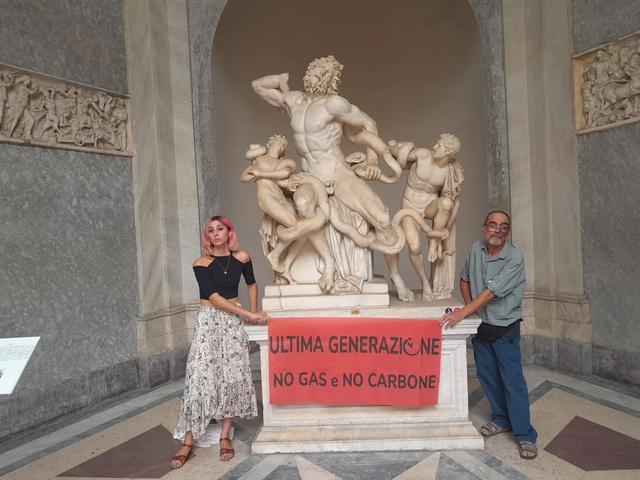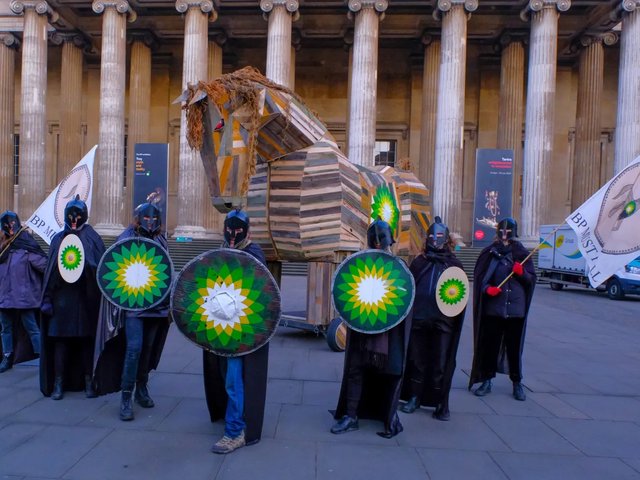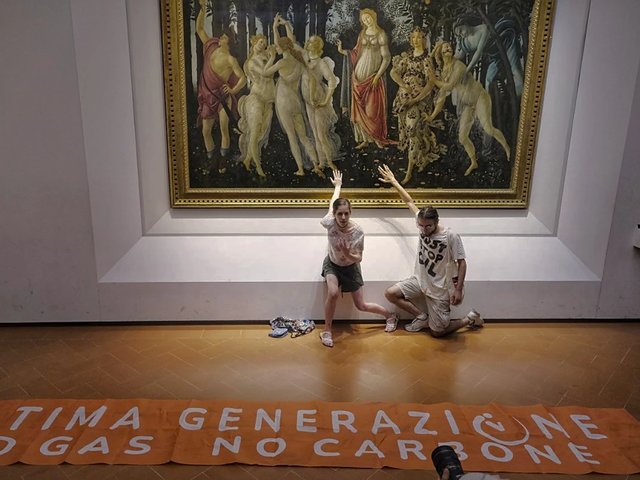🛑 Nuestras compañeras han sido detenidas.
— FuturoVegetal🍒 (@FuturoVegetal) November 5, 2022
Nos han llamado desde comisaría y dicen q están bien. Las despegaron usando un disolvente y las han detenido a la espera de que pasen a disposición judicial.
Necesitamos tu apoyo para dar cobertura a Alba y Samhttps://t.co/VCaSf8asGV pic.twitter.com/D8din26dem
Governments across Europe seem powerless to stop the growing number of eco-protests targeting masterpieces at major museums. The latest intervention in Italy—an attack by three activists on Vincent van Gogh’s The Sower (1888) at the Palazzo Bonaparte in Rome—prompted strong condemnation from the country’s newly appointed culture minister, Gennaro Sangiuliano.
Last week four demonstrators from the Ultima Generazione group (Last Generation) hurled pea soup at the Van Gogh painting which is on loan from the Kroeller-Müller Museum in the Netherlands; the piece was protected by a glass screen and did not suffer damage, said a museum spokesperson. The frame was slightly damaged however.
The newly appointed culture minister, Gennaro Sangiuliano, subsequently told the Ansa press agency: "We are a democratic country that makes possible all forms of protest. If you want to protest for the environment there are many ways, but you can't damage an important art work.”
Ultima Generazione remain defiant however, saying in a statement. “Non-violent direct actions will continue, until citizens receive answers from their government regarding their requests to stop gas and coal and [make] a decisive investment in renewables.”
The guerrilla attack tactics continues to divide commentators. “People see the endangerment of the works of art, but may ascribe that to the activists, not to the planetary erosion wrought by climate change. I don’t think everyone is getting the message,” writes Sally Hickson, associate professor of art history at the University of Guelph.
Jackie DesForges, a writer and former gallery attendant, says in the Los Angeles Times, that she was “darkly delighted” when she saw the food hit the paintings, referring also to the tomato soup attack on Van Gogh’s Sunflowers at London’s National Gallery last month by Just Stop Oil.
Both Just Stop Oil and Ultima Generazione are funded by the Climate Emergency Fund, a Los Angeles-based organisation created by three millionaires in 2019 to support environmental activism.
“It’s the part of me that understands that the only way to make these and other powerful institutions pay attention to you is to get too close—especially to something of great value with a high price tag. A part of me that understands that this isn’t about hurting art—if it were, these activists would pick pieces that aren’t behind glass,” DesForges says.
The Art Newspaper columnist Bendor Grosvenor thinks that the protestors have missed an opportunity though. Museums use too much energy, he points out, highlighting for instance how the National Gallery in London emits about 5,300 tonnes of CO2e annually. “I can’t accept the end justified the means. As for ‘it’s just a painting’, I’m afraid that’s as ridiculous as, ‘it’s just the weather’. Had they thought about it more deeply, the protesters could have gained something more than attention,” he says.
Speaking to The Art Newspaper Nikki Nita Ramirez, the director of Danuser & Ramírez gallery in London, says: “My opinion has swayed a bit but [the] sentiment stands the same. Now I’m more keen to question the reasons why these protesters are directly targeting houses of cultural heritage.” She adds that "these protests will likely send out the wrong message, and may have an adverse effect on the core values the eco activists are trying to convey."
Meanwhile on 5 November two protestors from the FuturoVegetal group taped themselves to the frames of two works by Francisco de Goya at the Prado in Madrid. In video footage, a man and a woman attached themselves to La Maja Vestida (The Clothed Maja) and La Maja Desnuda (The Naked Maja) and painted “+1.5 C” on the wall between the two works.
🛑🛑 ÚLTIMA HORA
— FuturoVegetal🍒 (@FuturoVegetal) November 5, 2022
Nos pegamos a “Las Majas” de Goya en el Museo Del Prado.
La semana pasada la ONU reconocía la imposibilidad de mantenernos por debajo del límite de aumento del Acuerdo de París de 1.5° de temperatura media respecto a los niveles preindustriales. pic.twitter.com/0buAMbeziJ
FuturoVegetal say in a tweet: “Last week the United Nations recognised the impossibility of staying below the Paris Agreement increase limit of 1.5° of average temperature compared to pre-industrial levels.” Both activists were arrested though it is unclear if they were charged; Prado staff said in a statement that the wall needed to be repaired. A spokesperson adds: "The room in which these works were housed reopened to visitors only three hours later as normal."





